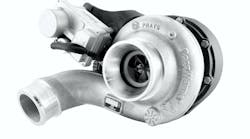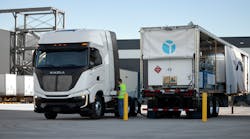As the average age of vehicle fleets increases, the frequency and cost of routine maintenance and repairs also rise. This can result in a substantial impact on operating costs and vehicle downtime.
Like any business, a priority of fleets is to make profits; and for fleets, a key to achieving this is to maximize transportation efficiency. The formula is seemingly simple: keep operating costs minimized, and trucks on the road as much as possible.
Making informed decisions
During a repair or maintenance event, fleets have the option to pay for new, rebuilt or remanufactured parts to get the vehicle back on the road. To make an informed decision on how the vehicle should be repaired, smart fleets consider their overall goals, weigh long- and short-term options and properly assess each situation. Some of the most important factors to consider include:
- Cost
- Availability
- Reliability
In most cases, remanufactured parts offer the best blend of these three factors. Fleets that utilize reliable remanufactured parts in their repair and maintenance programs can significantly reduce operating costs. In fact, a remanufactured product can cost from 25 percent up to 40 percent less than a new part, and often carries the same warranty.
With many fleets having dozens or even hundreds of vehicles, this can mean significant savings for the bottom line. Even smaller fleets, which tend to have older vehicles requiring frequent repair and maintenance, are especially good candidates for remanufactured parts.
While repair time is a factor in the decision — since minimizing vehicle downtime is essential to driving profit — short-term and long-term reliability of the repair work also need to be considered. Even though a low price tag and short repair time may seem attractive, fleets risk seeing the same vehicle back in the shop in the near future if they do not use caution and elect the most value-driven solution.
Remanufactured versus rebuilt
It is critical fleets understand the distinct difference between component remanufacturing and rebuilding. Remanufactured units provide the same performance and reliability as new parts thanks to a thorough, advanced salvage and engineering process conducted on every aspect of the component.
Conversely, rebuilding traditionally involves just repairing what is broken. In other words, not all parts that make up the component are tested for optimal performance. Both terms are not always accurately depicted, and are sometimes used interchangeably, so it is important to know there is a difference and ensure you are buying the desired part type.
No two parts are the same, and this also is true with remanufactured parts. To ensure a high-quality product, consider the following:
- Are the remanufactured parts truly remanufactured or are they repaired/rebuilt?
- Where did the parts originate?
- Were the parts validated? If so, how?
- Is the supplier known for producing quality parts and do they have a good reputation for reconditioning parts?
- How aligned is the supplier with the OE specs and processes?
Quality, testing and cost
As in every industry, there are different tiers of quality involved in remanufacturing. For example, to be considered remanufactured, each part should initially go through a cleaning process that is in line with OE engineering specifications. This is done to help determine if the part can be effectively salvaged. Unfortunately, not all companies take the time to thoroughly inspect all parts that make up the failed component – the critical dimensions of a turbocharger’s internal components, for example – which can negatively impact the performance of the component as a whole.
Quality parts suppliers often have a number of stringent quality standards. For instance, BorgWarner ensures remanufactured turbochargers are assembled, balanced and tested with OE-grade manufacturing equipment and processes. To remanufacture parts that are nearly identical in durability and performance as their OE counterpart, the company conducts a comprehensive remanufacturing process. That process includes:
- Conducting an initial disassembly and inspection
- Utilizing state-of-the-art cleaning processes
- Ensuring critical dimensions are checked to drawing tolerances
- Replacing non-conforming parts with new components
- Conducting high- and low-speed balancing of components and core assemblies
- Properly setting the product
- Examining product functionality
- Executing a final inspection
A thorough remanufacturing process like this provides fleets confidence that a vehicle will be back on the road, functioning as it would with a new part.
It is important to note reman products are cost effective compared to new parts, which helps fleets balance their cost versus value needs.
For even greater cost savings, some remanufacturers provide credits if the fleet provides the core of the used component (for example, a turbo core). Remanufacturers offer this benefit because through their perfected art of deep-salvaging components, they are still capable of extracting value from the worn out core.
Environmental impact
Beyond cost, a relatively quick turnaround and exceptional reliability, opting for a reman product is an environmentally friendly decision since materials are preserved to the greatest possible extent.
According to the Association for Sustainable Manufacturing (MERA) “a remanufacturer can use 85 to 95 percent less energy and materials per unit produced than a new equipment manufacturer because the reused ‘cores’ retain the energy and materials from their original production.” Likewise, a study by the Fraunhofer Institute in Stuttgart, Germany, advises that global remanufacturing efforts result in an annual savings of raw materials that would fill 155,000 railroad cars on a train more than 1,000 miles long.
Thom Miles is a member of the BorgWarner Global Aftermarket team, responsible for turbochargers and related products in the North American region. Miles brings over 30 years of sales and product management experience to his position in the commercial vehicle and passenger car market space. He has worked closely with both OE and independent distribution partners for most of his professional career.



